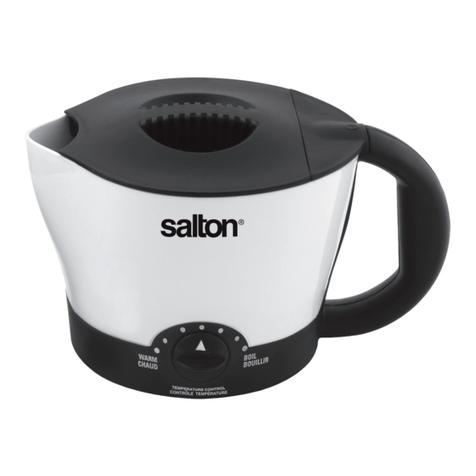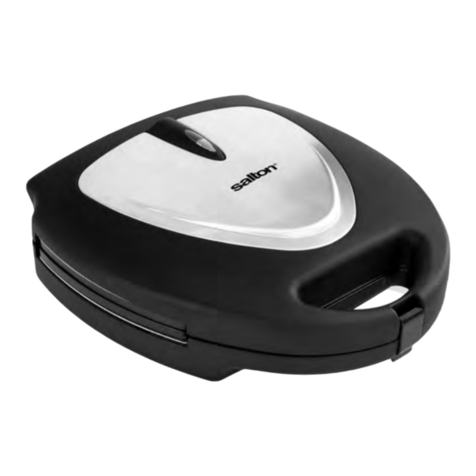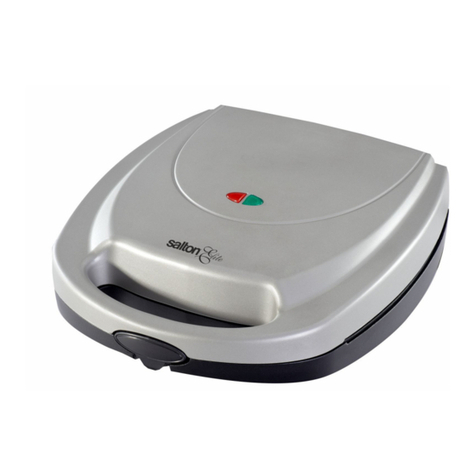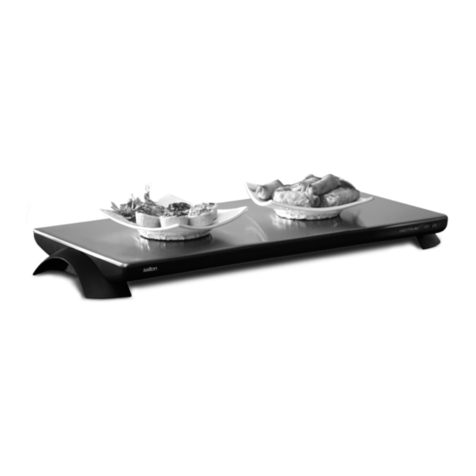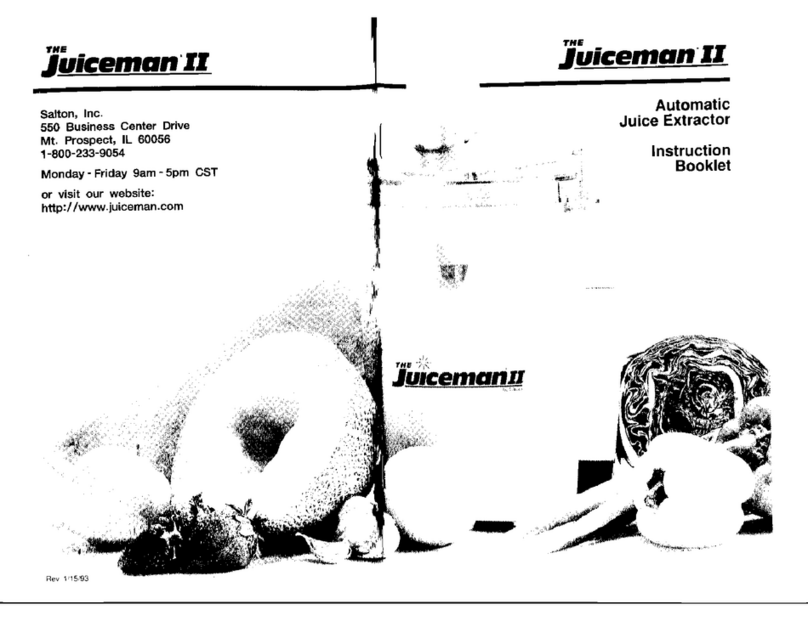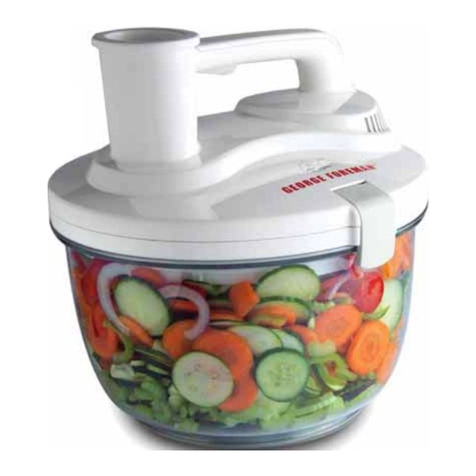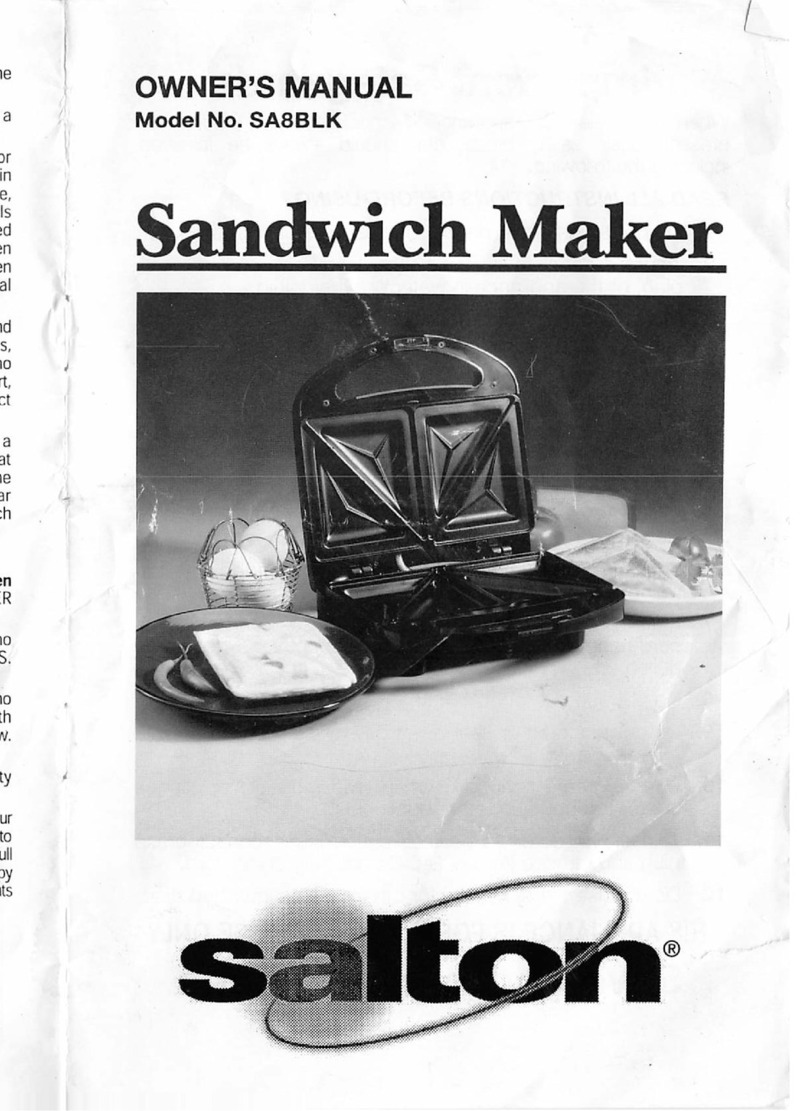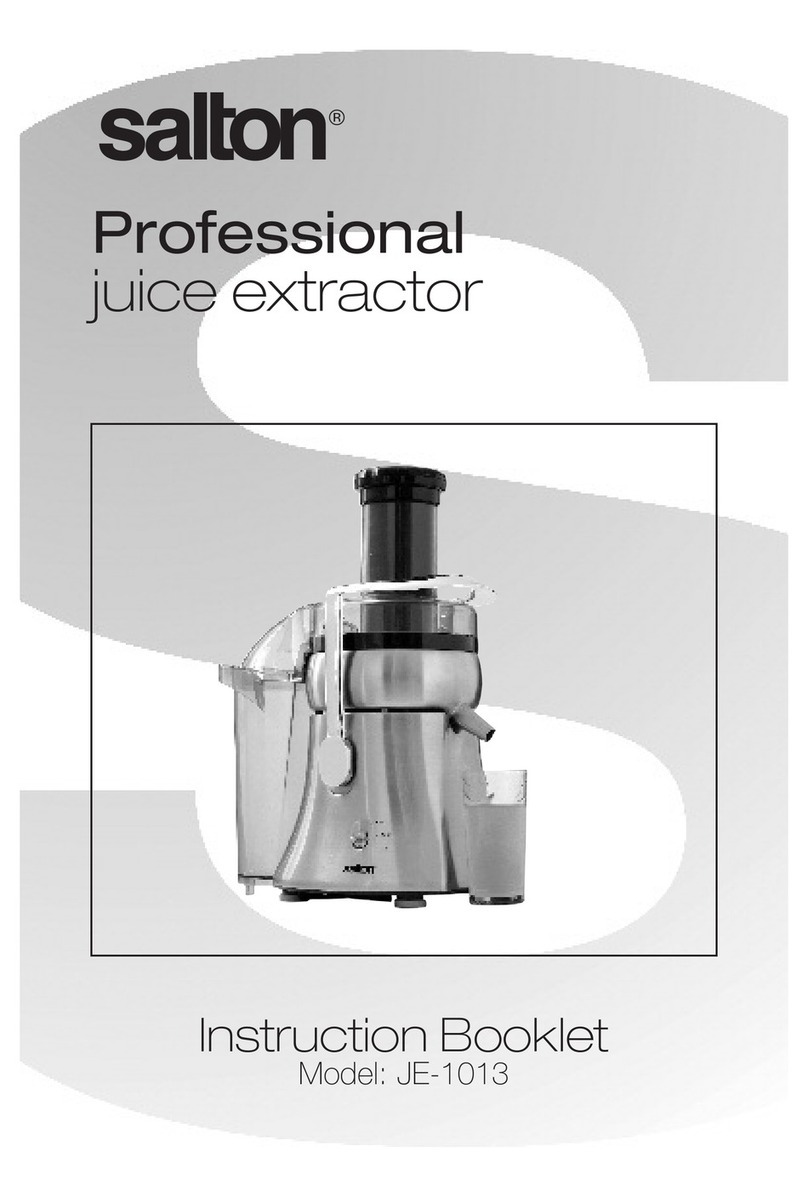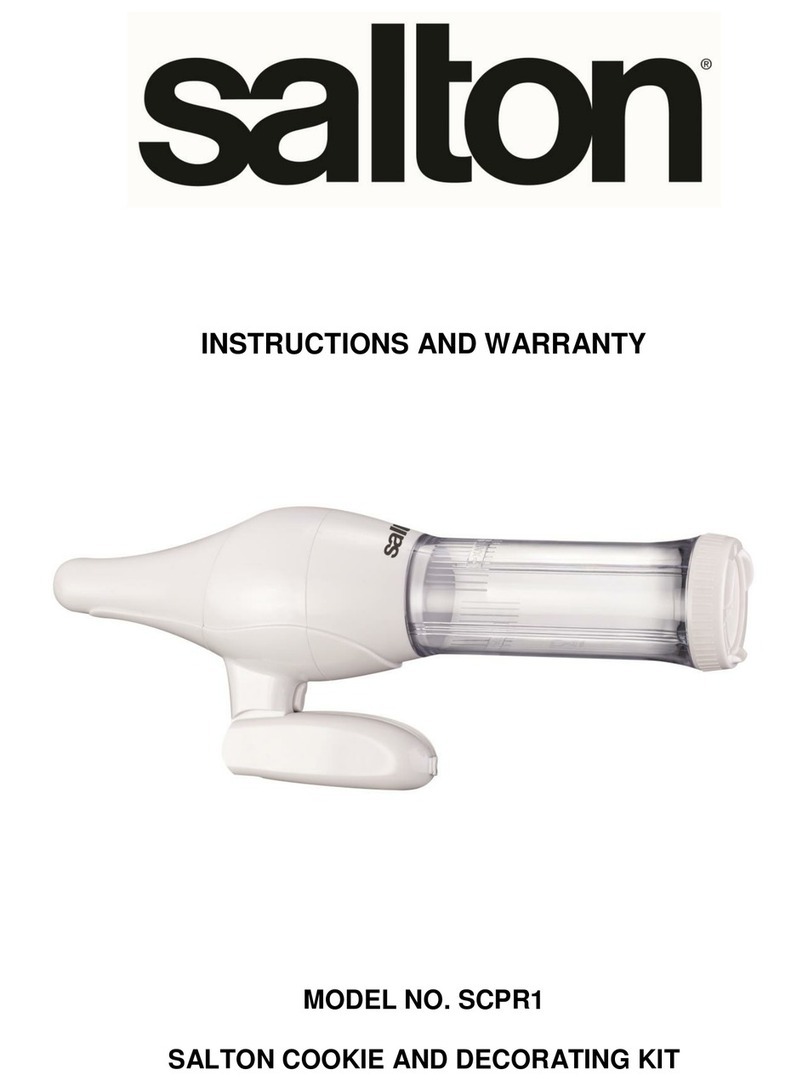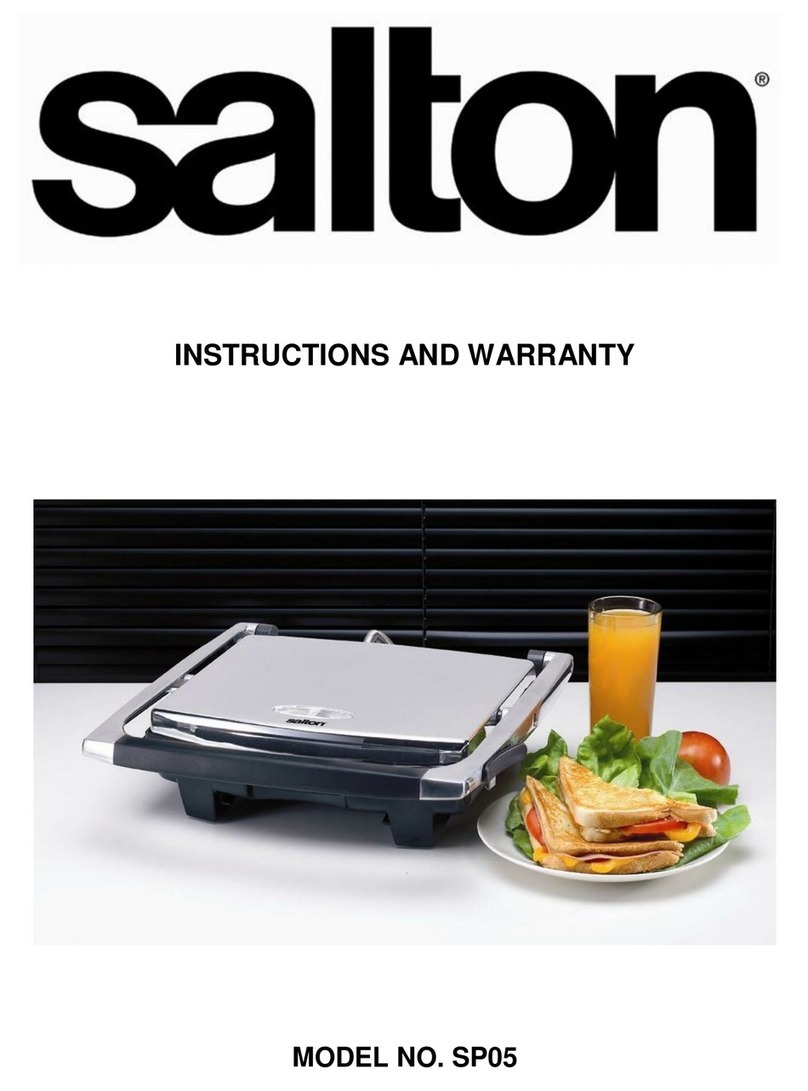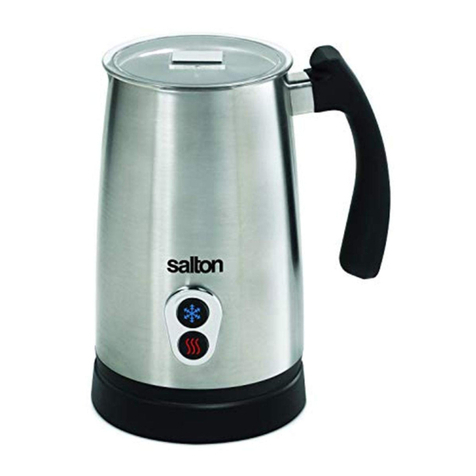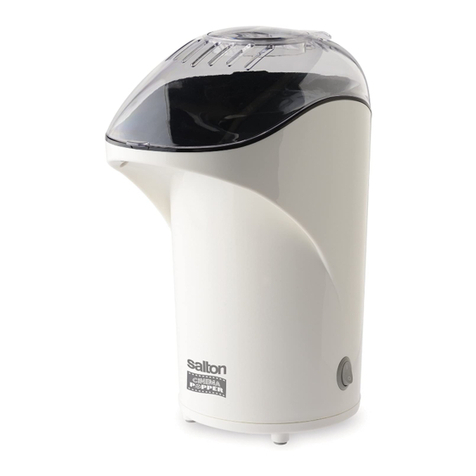VEGETABLE PREPARATION DRYNESS TEST TIME (Hrs)
Eggplant Peel then slice 6 mm – 12 mm Leathery 4 – 15
(1/4" – 1/2") thick
Garlic Separate into cloves. Remove outer Brittle 4 – 12
skin, slice, then place to dry. Grind
when ready to use.
Greens – Spinach, Wash very thoroughly, trim stems. Very brittle 4 – 10
Kale, Chard, Turnip Steam until wilted.
Mushrooms Choose young mushrooms. Gently Leathery 5 – 12
brush to remove dirt. Slice 10 mm
(3/8") thick, dip in lemon juice
to retain white colour.
Okra Choose young okra. Wash, trim Leathery 4 – 10
pods, cut into 6 mm (1/4") circles.
Onions, Leeks Remove tops, bottoms and skin. Cut Brittle 5 – 12
into 12 mm (1/2") slices or chunks.
Use cheesecloth to prevent falling
through tray. Stir while drying.
Parsley Tear into small pieces. Chop once dried. Brittle 2 – 4
Parsnips Slice or dice into 6 mm (1/4") Leathery 4 – 12
pieces. Steam until tender.
Peas Use tender young peas. Shell. Blanch Brittle 4 – 12
until tender. Stir during drying.
Peppers, sweet, Cut in half. Remove seeds, cut into Leathery 4 – 12
green, red 6 mm (1/4") strips.
Peppers, hot Wear rubber gloves while handling. Leathery 4 – 16
Place whole pepper on trays to dry.
Potatoes No need to peel potatoes. Slice or dice Brittle 4 – 16
into 6 mm (1/4") pieces. Steam until tender.
Rutabagas Slice thin or dice into 6 mm (1/4") Leathery 10 – 6
pieces. Steam until tender.
Squash/summer Do not peel. Wash and trim. Slice Leathery 4 – 16
into 6 mm (1/4") thick pieces.
Tomatoes Remove stems. Remove skin by Leathery 6 – 20
dipping in boiling water. Halve or
slice into 6 mm (1/4") pieces.
Turnips Slice thin or dice into 6 mm (1/4") Leathery 24 – 36
pieces. Steam until tender
Zucchini Slice 3 mm (1/8") thick. Leathery 24 – 36
10

